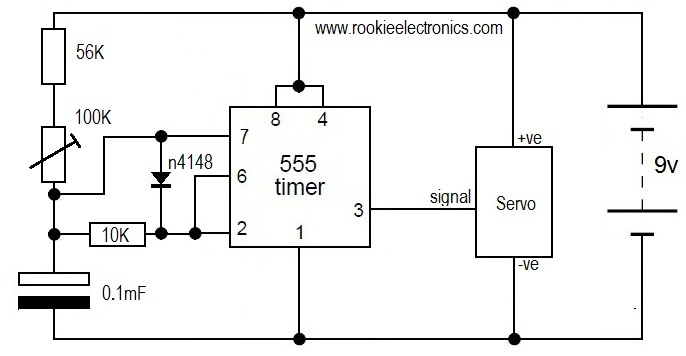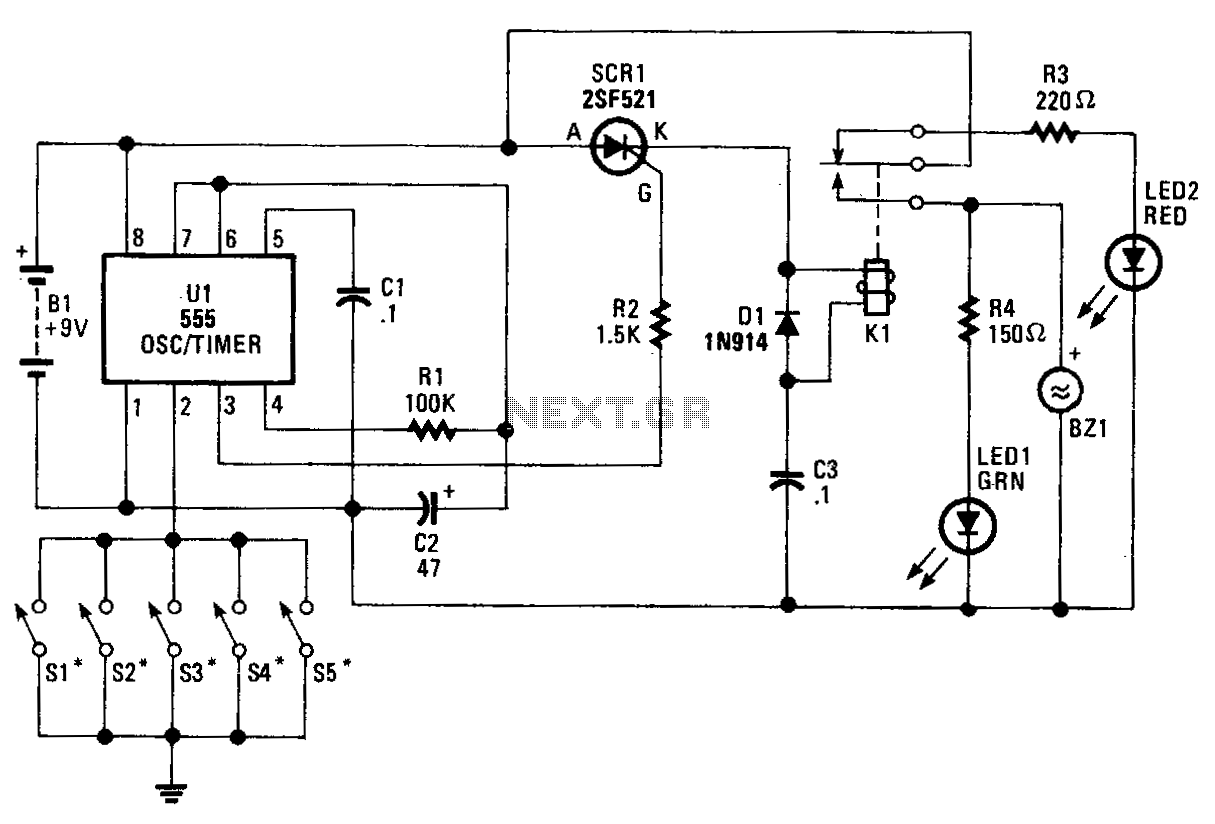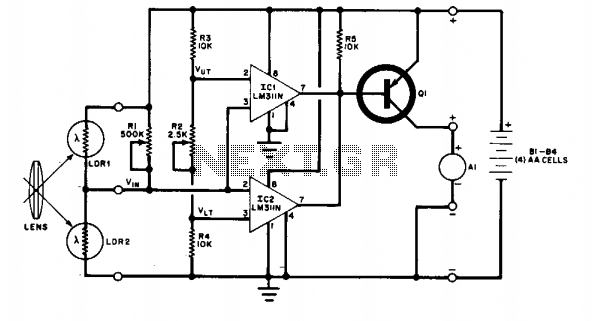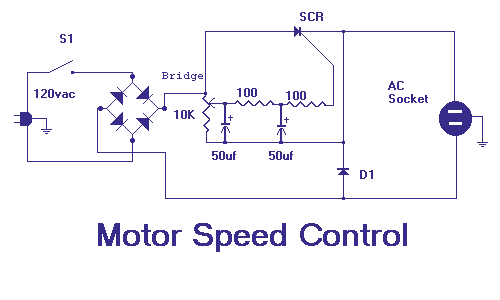
Speed alarm
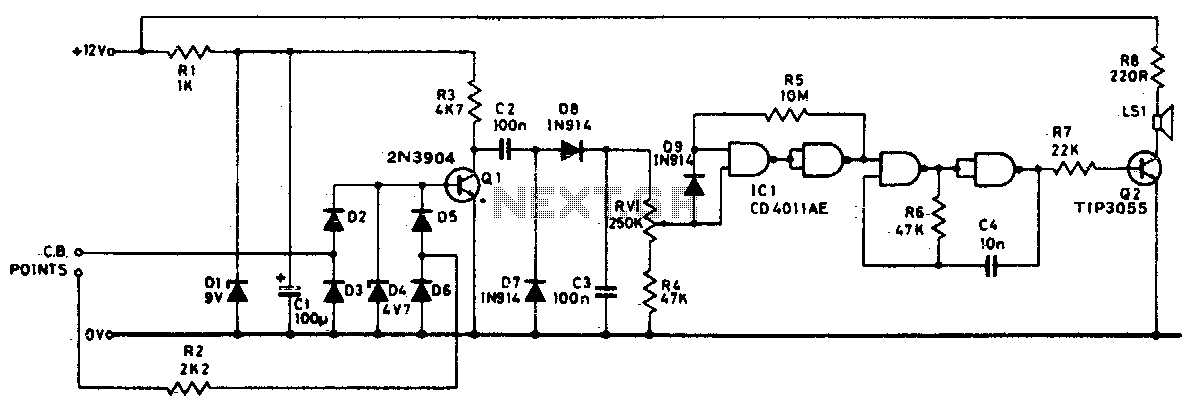
Pulses from the distributor points are passed through a current-limiting resistor, rectified, and clipped at 4 volts. Through Q1 and the diode pump, a DC voltage proportional to engine RPM is presented to RV1. The sharp transfer characteristic of a CMOS gate, assisted by feedback, is utilized to enable the oscillator formed by the remaining half of the 4011. At the pre-set speed, a noticeable tone emits from the speaker and disappears as soon as the speed drops by three or four mph.
The described circuit functions as a speed detection and alert system for vehicles, utilizing the pulses generated by the distributor points as a primary input signal. The initial stage involves a current-limiting resistor that ensures the pulse amplitude is suitable for subsequent processing, protecting the components from excessive current. The pulses are then rectified, converting the AC signal into a DC voltage, which is further clipped to a maximum of 4 volts to maintain a consistent voltage level for downstream components.
The transistor Q1 acts as a switch, allowing the rectified voltage to be fed into a diode pump. This arrangement boosts the voltage to a level that is proportional to the engine RPM, which is then directed to RV1, a variable resistor that may be used to calibrate the sensitivity of the circuit.
The CMOS gate, known for its sharp transfer characteristics, plays a pivotal role in determining the output signal. Feedback is utilized to stabilize the oscillation, which is generated by the unused half of the 4011 quad NAND gate. This oscillator produces a tone that can be heard through a connected speaker, serving as an alert system for the driver.
The design includes a specific threshold speed, at which the tone becomes audible. This threshold is critical as it provides a clear indication to the driver when the vehicle reaches a pre-defined speed. If the vehicle's speed decreases by three or four mph from this threshold, the tone ceases, thereby providing an effective and simple means of speed monitoring. The overall circuit is compact and efficient, making it suitable for integration into various vehicle systems.Pulses from the distributor points are passed through a current limiting resistor, rectified, and clipped at 4 volts. Via Q1 and the diode pump, a dc voltage proportional to engine rpm is presented to RV1; the sharp transfer characteristic of a CMOS gate, assisted by feedback, is used to enable the oscillator formed by the remaining half of the 4011
At the pre-set speed, a nonignorable tone emits from the speaker, and disappears as soon as the speed drops by three or four mph.
The described circuit functions as a speed detection and alert system for vehicles, utilizing the pulses generated by the distributor points as a primary input signal. The initial stage involves a current-limiting resistor that ensures the pulse amplitude is suitable for subsequent processing, protecting the components from excessive current. The pulses are then rectified, converting the AC signal into a DC voltage, which is further clipped to a maximum of 4 volts to maintain a consistent voltage level for downstream components.
The transistor Q1 acts as a switch, allowing the rectified voltage to be fed into a diode pump. This arrangement boosts the voltage to a level that is proportional to the engine RPM, which is then directed to RV1, a variable resistor that may be used to calibrate the sensitivity of the circuit.
The CMOS gate, known for its sharp transfer characteristics, plays a pivotal role in determining the output signal. Feedback is utilized to stabilize the oscillation, which is generated by the unused half of the 4011 quad NAND gate. This oscillator produces a tone that can be heard through a connected speaker, serving as an alert system for the driver.
The design includes a specific threshold speed, at which the tone becomes audible. This threshold is critical as it provides a clear indication to the driver when the vehicle reaches a pre-defined speed. If the vehicle's speed decreases by three or four mph from this threshold, the tone ceases, thereby providing an effective and simple means of speed monitoring. The overall circuit is compact and efficient, making it suitable for integration into various vehicle systems.Pulses from the distributor points are passed through a current limiting resistor, rectified, and clipped at 4 volts. Via Q1 and the diode pump, a dc voltage proportional to engine rpm is presented to RV1; the sharp transfer characteristic of a CMOS gate, assisted by feedback, is used to enable the oscillator formed by the remaining half of the 4011
At the pre-set speed, a nonignorable tone emits from the speaker, and disappears as soon as the speed drops by three or four mph.


